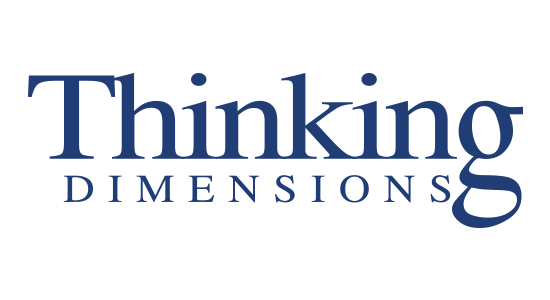Blog 3 of 5
 The world as we have created it is a process of our thinking. It cannot be changed without changing our thinking.
The world as we have created it is a process of our thinking. It cannot be changed without changing our thinking.
-Albert Einstein
In Part 2, we discovered how a group of participants coped with being exposed to the Polestar Business Simulation. It is important to reiterate that the participants were totally unprepared for the exposure and were expected to fail abysmally, which they did!
This failure was predictable given all the unreasonable objectives that were set - And yet this is exactly what happens in a real life situation. We would not expect a hobbyist “Hang Glider Pilot” to climb into the cockpit of an Airbus 380 and pilot it successfully and safely. We would hope that any aircraft that we boarded would be piloted by a well-qualified and prepared aviator. We would be expecting someone who could handle the aircraft in any situation, someone who would have spent numerous hours on the A380 simulator perfecting their skills without endangering passengers or other aircraft.
Is it only in business that we assume that given a situation any staff member will be able to adapt and adopt a new role in the organisation? All of this with a minimum of preparation or introduction to the other team members they may be expected to interact and communicate with?
At Thinking Dimensions, we have been working for over 18 years to develop the KEPNERandFOURIE™ processes to a point where they can satisfy these needs. We provide our clients with a suite of tools that will equip them to deal with situations/simulations they are exposed to in their working and personal lives.
At Thinking Dimensions, we tackle the situation from the “HOW” aspect. In this example let us look at how we might best equip our participants with the 5 business skills that give them direction through the simulation.
- How to Ensure Effective Communication
- How to Work through an Efficient Process
- How to Ensure Consensus in Decision Making
- How to Understand and Cater for Customer Needs
- How to Ensure Continuous Service Improvement
Each of these skills is a book title on its own so I will be dealing with these (How To’s” over the next 2 successive blogs. In this blog I intend to show how we use the KEPNERandFOURIE™ processes to best ensure effective communication.
At the outset we need to be aware of who we are dealing with, who are the important players in the simulation that need to be kept informed, so we need to Identify the Stakeholders. These can generally be divided into 3 groups as per the graphic below:

It is not good enough to know just who the Stakeholders are but also:
- What they need to know?
- When they need to know it?
- How best to communicate it to them?
It cannot be stressed how important it is to listen to the team members in terms of agreeing on the different aspects within a situation. Neglect at your peril the contribution from the “techie in the corner” for they are probably the person closest to the situation and the one who possesses that critical knowledge necessary to resolve a problem.
In the same vein it is critical that the right people are consulted and are made available for question and answer sessions either in the room or remotely. One of Chuck Kepner’s favourite sayings was;
“If a team could not solve an incident, the person with the appropriate information was not invited to the meeting.”
In next week’s blog, we will look at how to work most efficiently through a process and how we can ensure we make best use of our time by arriving at consensus in our decision making.




